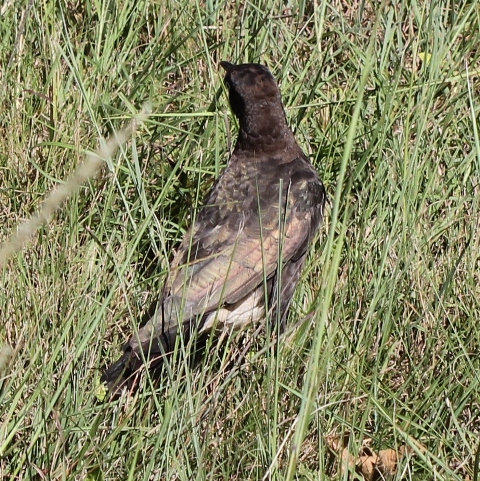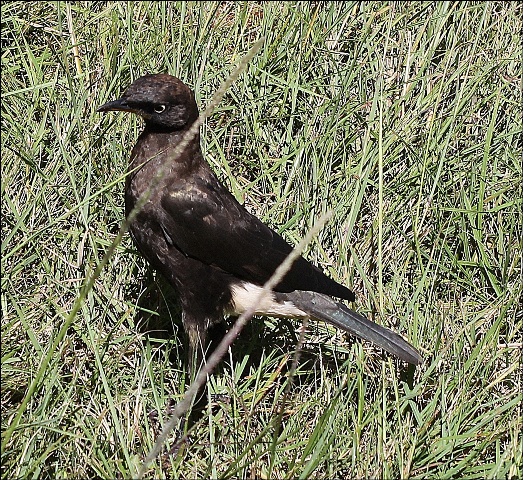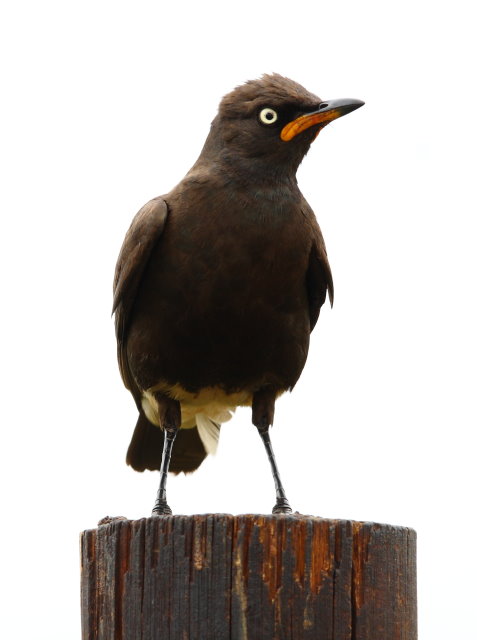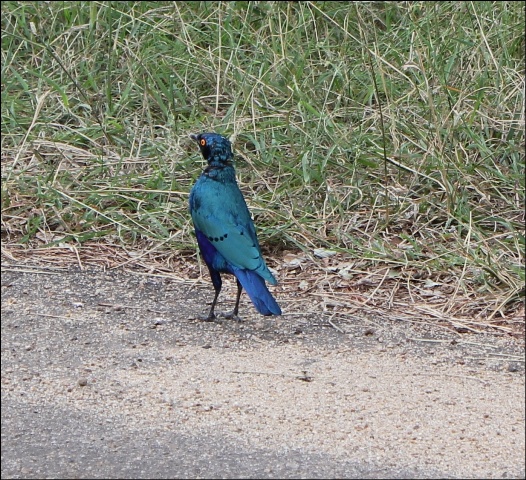Re: STARLINGs & their Allies - Bird of the Month: April 2013
Posted: Thu Apr 11, 2013 9:32 am
A Pale-winged Starling does not look "pale-winged" at rest  , it has a white patch in the primaries, but it appears to be orange-edged.
, it has a white patch in the primaries, but it appears to be orange-edged. 
So best told from Red-winged cousin by the orange eyes.
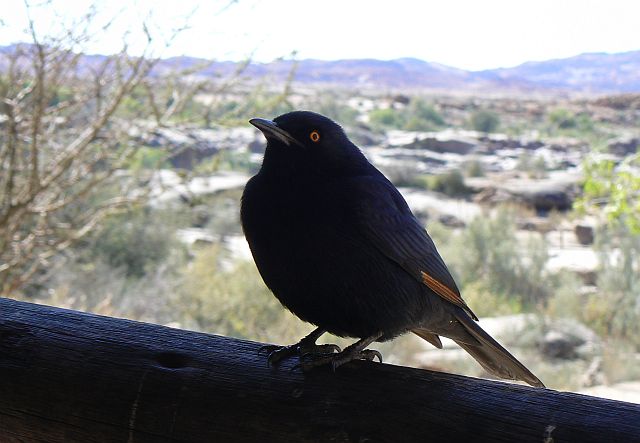 at Augrabies
at Augrabies
Or you go for the ID with a distribution map


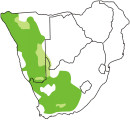
Description
27 cm. Uniformely glossy black plumage. Pale rufous panel on wing (well visible in flight). Orange-yellow eye. Black bill and legs. Sexes similar. Juveniles are less glossy than adults and have a brown eye.
Distribution and habitat
Near-endemic to southern Africa, occurring from southern Angola through Namibia to the Northern, Western and Eastern Cape, marginally extending into the Free State. It generally prefers habitats with rock-strewn hills and valleys, as it is dependant on them for nesting and roosting sites. It generally avoids man-made areas, although it occasionally ventures into cities in search of food.
Food
It mainly eats insects, fruit, seeds, nectar and pollen, foraging on the ground or gleaning food from vegetation; it also regularly hawks prey from a perch. In addition it may remove ectoparasites from Klipspringers (Oreatragus Oreatragus) and Mountain zebra (Equus zebra). The following food items have been recorded in its diet: Termites, butterflies (Lepidoptera), grasshoppers (Orthoptera), Coleoptera (beetles), fruit, seeds, nectar and pollen of Aloe.
Breeding
Monogamous and semi-colonial, meaning that a number of breeding pairs may build their nests in close proximity to each other on a cliff. The nest is a cup built of sticks and dry grass, typically wedged in a crevice cleft in a rock, or rarely in building. Egg-laying season is from October-April. It lays 2-5 eggs, which are incubated solely by the female for about 20 days. The chicks are fed by both parents, leaving the nest after about 25 days.
So best told from Red-winged cousin by the orange eyes.
 at Augrabies
at AugrabiesOr you go for the ID with a distribution map

Description
27 cm. Uniformely glossy black plumage. Pale rufous panel on wing (well visible in flight). Orange-yellow eye. Black bill and legs. Sexes similar. Juveniles are less glossy than adults and have a brown eye.
Distribution and habitat
Near-endemic to southern Africa, occurring from southern Angola through Namibia to the Northern, Western and Eastern Cape, marginally extending into the Free State. It generally prefers habitats with rock-strewn hills and valleys, as it is dependant on them for nesting and roosting sites. It generally avoids man-made areas, although it occasionally ventures into cities in search of food.
Food
It mainly eats insects, fruit, seeds, nectar and pollen, foraging on the ground or gleaning food from vegetation; it also regularly hawks prey from a perch. In addition it may remove ectoparasites from Klipspringers (Oreatragus Oreatragus) and Mountain zebra (Equus zebra). The following food items have been recorded in its diet: Termites, butterflies (Lepidoptera), grasshoppers (Orthoptera), Coleoptera (beetles), fruit, seeds, nectar and pollen of Aloe.
Breeding
Monogamous and semi-colonial, meaning that a number of breeding pairs may build their nests in close proximity to each other on a cliff. The nest is a cup built of sticks and dry grass, typically wedged in a crevice cleft in a rock, or rarely in building. Egg-laying season is from October-April. It lays 2-5 eggs, which are incubated solely by the female for about 20 days. The chicks are fed by both parents, leaving the nest after about 25 days.
